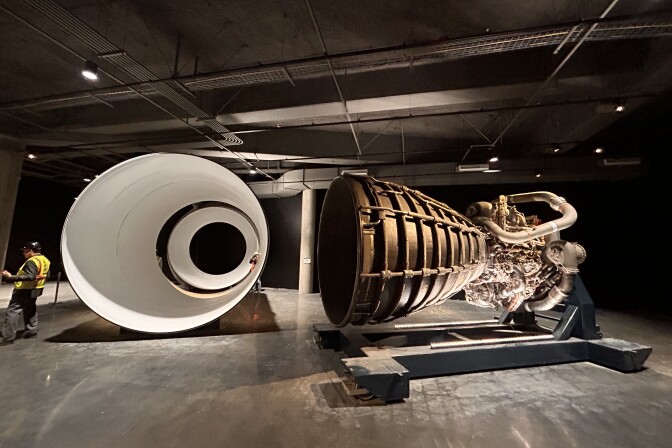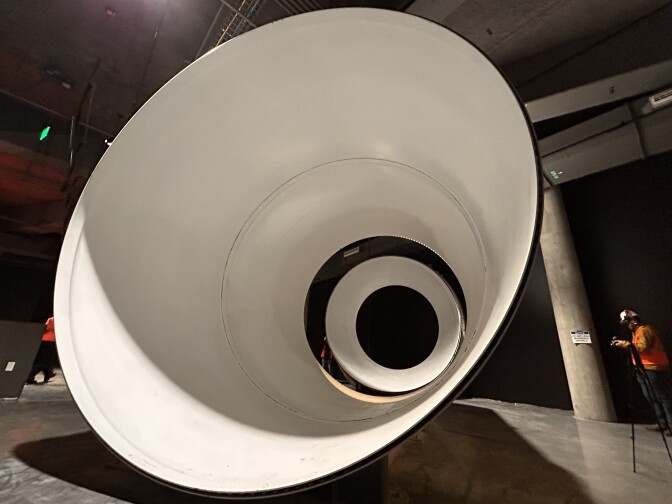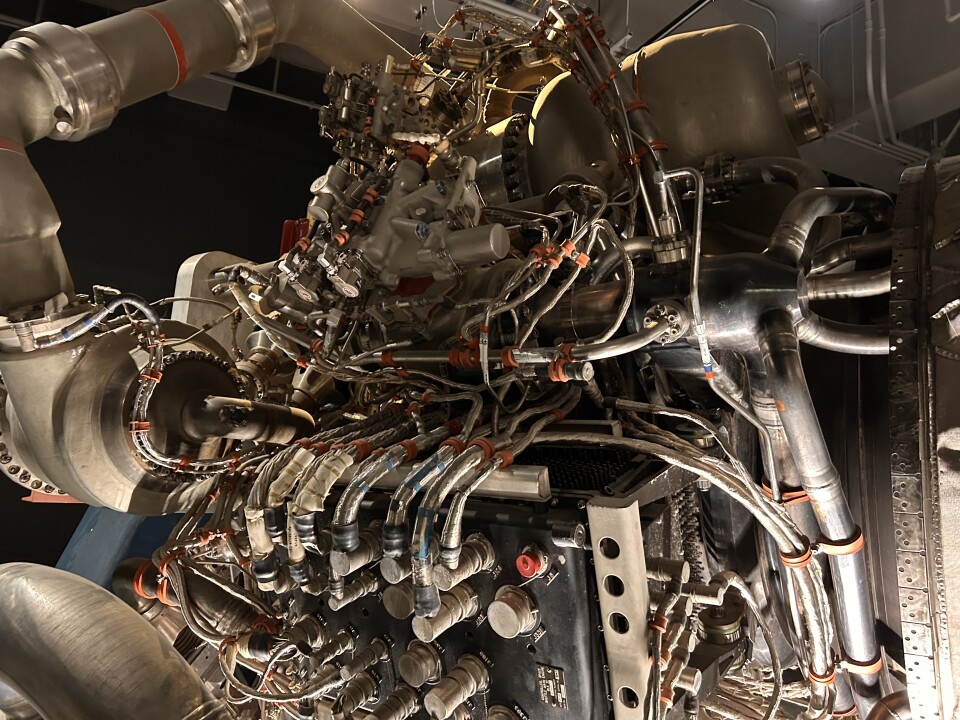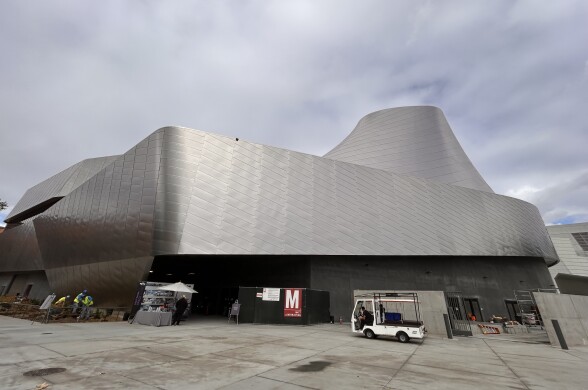MADISON, Wis. — U.S. wildlife officials announced a decision Tuesday to extend federal protections to monarch butterflies after years of warnings from environmentalists that populations are shrinking and the beloved pollinator may not survive climate change.
The U.S. Fish and Wildlife Service plans to add the butterfly to the threatened species list by the end of next year following an extensive public comment period.
"The iconic monarch butterfly is cherished across North America, captivating children and adults throughout its fascinating life cycle," U.S. Fish and Wildlife Service Director Martha Williams said in a news release. "Despite its fragility, it is remarkably resilient, like many things in nature when we just give them a chance."
The Endangered Species Act affords extensive protections to species the wildlife service lists as endangered or threatened. Under the act, it's illegal to import, export, possess, transport or kill an endangered species. A threatened listing allows for exceptions to those protections.
In the monarch's case, the proposed listing would generally prohibit anyone from killing or transporting the butterfly. People and farmers could continue to remove milkweed, a key food source for monarch caterpillars, from their gardens, backyards and fields but would be prohibited from making changes to the land that make it permanently unusable for the species. Incidental kills resulting from vehicle strikes would be allowed, people could continue to transport fewer than 250 monarchs and could continue to use them for educational purposes.
"We want people to continue to raise caterpillars and monarchs in their homes and use them for education," said Lori Nordstrom, assistant regional director for ecological services for the wildlife service's Midwest region.
The proposal also would designate 4,395 acres (1,779 hectares) in seven coastal California counties where monarchs west of the Rocky Mountains migrate for winter as critical habitat for the butterfly. The designation would prohibit federal agencies from destroying or modifying that habitat. The designation doesn't prohibit all development, but landowners who need a federal license or permit for a project would have to work with the wildlife service to mitigate damage.
Efforts to list the monarch as threatened began a decade ago
It's been a long road to get a formal proposal from the wildlife service.
The Center for Biological Diversity and other conservation groups petitioned the agency in 2014 to list the monarch as threatened. The agency launched a review of the the butterfly's status at the end of 2014, concluding six years later that listing was warranted but other species took priority. The center filed a federal lawsuit and won a settlement in 2022 that called for the government to decide whether to list monarchs by September 2024. The government secured an extension to December.
"The fact that a butterfly as widespread and beloved as the monarch is now the face of the extinction crisis is a ... distress signal warning us to take better care of the environment that we all share," said Tierra Curry, a senior scientist at the center.
Monarchs are found across North America. Known for their distinctive orange-and-black wings, they're a symbol of sunny summer days. But conservationists have worried for the past decade that monarch numbers are dwindling.
Monarchs in the eastern United States spend winters in Mexico. Monarchs west of the Rocky Mountains typically migrate to the California coast, where their colorful clusters in tree groves attract nature lovers and tourists.
Monarch numbers have dropped dramatically
World Wildlife Fund Mexico, a branch of the independent global wildlife preservation organization, tracks monarch migration in that country. The group released data in February that shows the species occupied only 2.2 acres (.9 hectares) of their traditional overwintering groves in 2023-24. That's a 59% decrease in area from the previous year when the organization observed monarchs across 5.5 acres (2.2 hectares).
The Xerces Society for Invertebrate Conservation collects data from overwintering sites along the California coast, northern Baja California and some inland sites in California and Arizona. The number of monarchs that volunteers have counted during November — the peak of the migration season when most butterflies are present — has fallen a staggering 81% over the past quarter-century, from 1,235,490 monarchs across 101 sites to just 233,394 over 257 sites last year.
Environmentalists say monarch populations are shrinking because of warmer temperatures from brought on by climate change, agricultural expansion and herbicides that have hindered growth of milkweed — the main food source for monarch caterpillars.
The Convention on the Conservation of Migratory Species of Wild Animals (CMS), which works globally to conserve migratory animals through through treaties and regional agreements, has warned that as the planet warms, milkweed could shift toward the poles to find more conducive growing conditions. That could force monarchs to migrate longer distances, reducing time spent breeding.
Temperature changes brought on by climate change could wreak havoc on monarch migration, too. Warmer temperatures could delay or prevent monarchs' return north, according to the convention.
Monarchs also need to overwinter in forests where temperatures are cold enough to slow their metabolism but not so cold that they freeze. So the CMS has warned temperature shifts could spell doom for the insects.
Why the monarchs weren't designated as endangered
Kristen Lundh, a biologist with the wildlife service, said that the agency chose to propose listing monarchs as threatened rather than endangered because they're not in immediate danger of becoming extinct across all or a significant portion of their range. Monarchs west of the Rockies have a 95% chance of becoming extinct by 2080, she said, but most of the U.S. monarch population — 90% — can be found east of the Rockies and that population faces a 57% to 74% probability of extinction by then, she said.
Tuesday's announcement kicks off a 90-day public comment period. Then the wildlife agency will decide whether to tweak the proposal, publish the listing or drop the effort. The agency has until December of 2025 to publish the listing if it moves forward.
The proposal raises questions for groups that have been advocating for voluntary conservation in hopes of staving off a federal listing — and potential restrictions that could come with it.
Matt Mulica is the lead facilitator for Farmers for Monarchs, a group of farmers, ranchers and agricultural businesses that include the American Farm Bureau Federation and the American Soybean Association.
Mulica said farmers have been working for years on their own to maintain monarch habitat. It's too early to know what a threatened listing would mean for agriculture, he said.
Copyright 2024 NPR

















